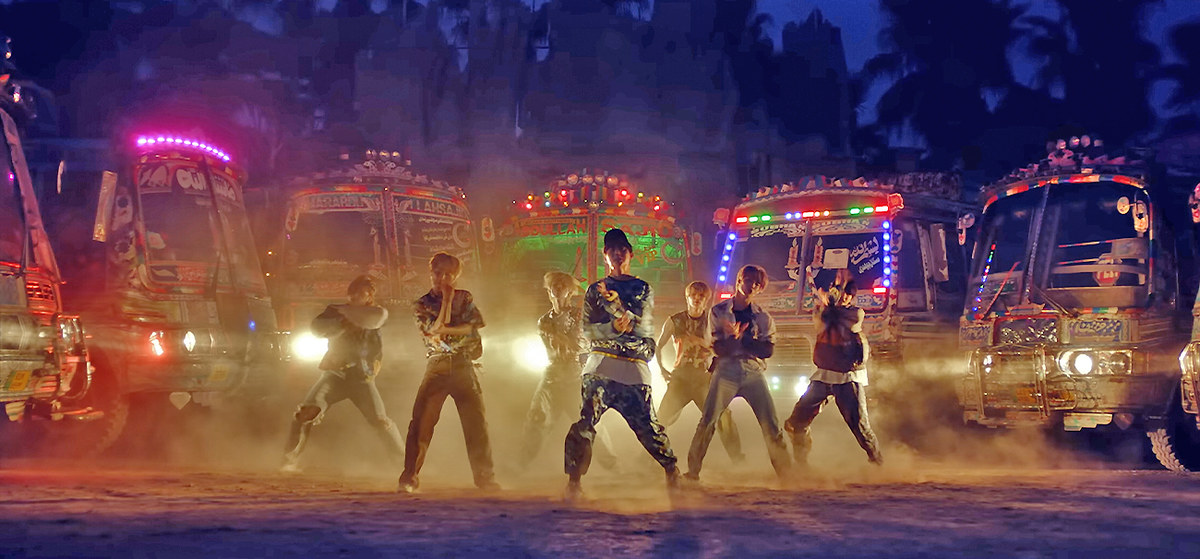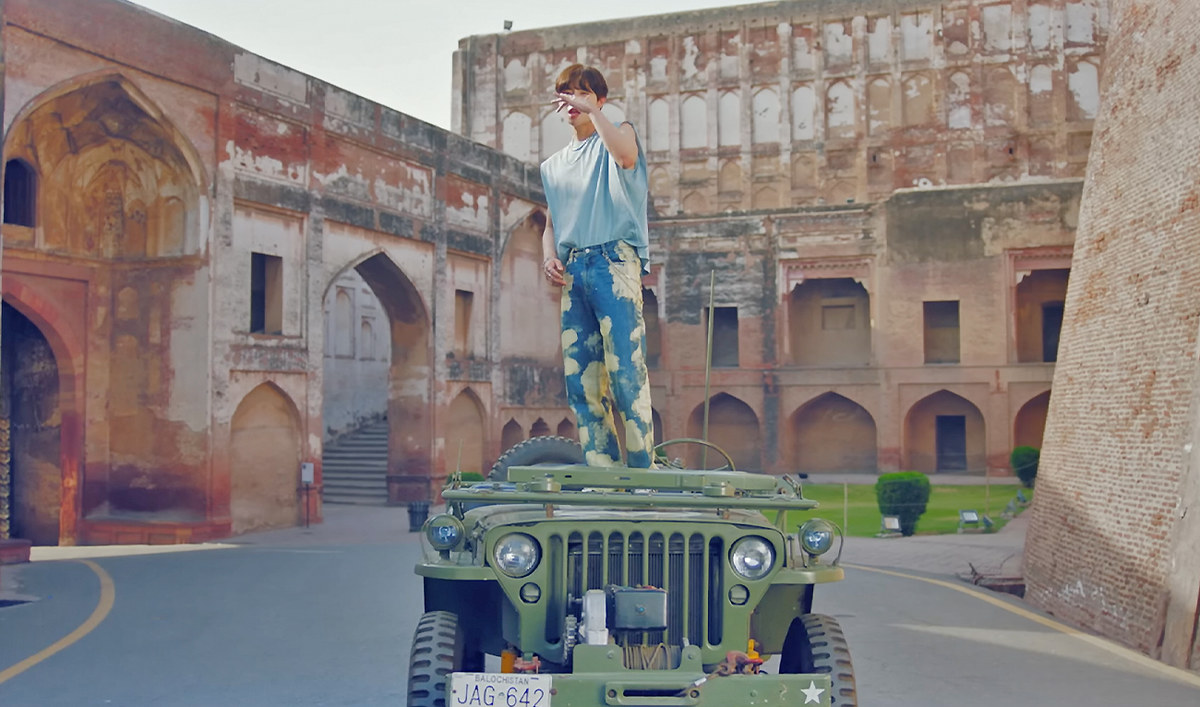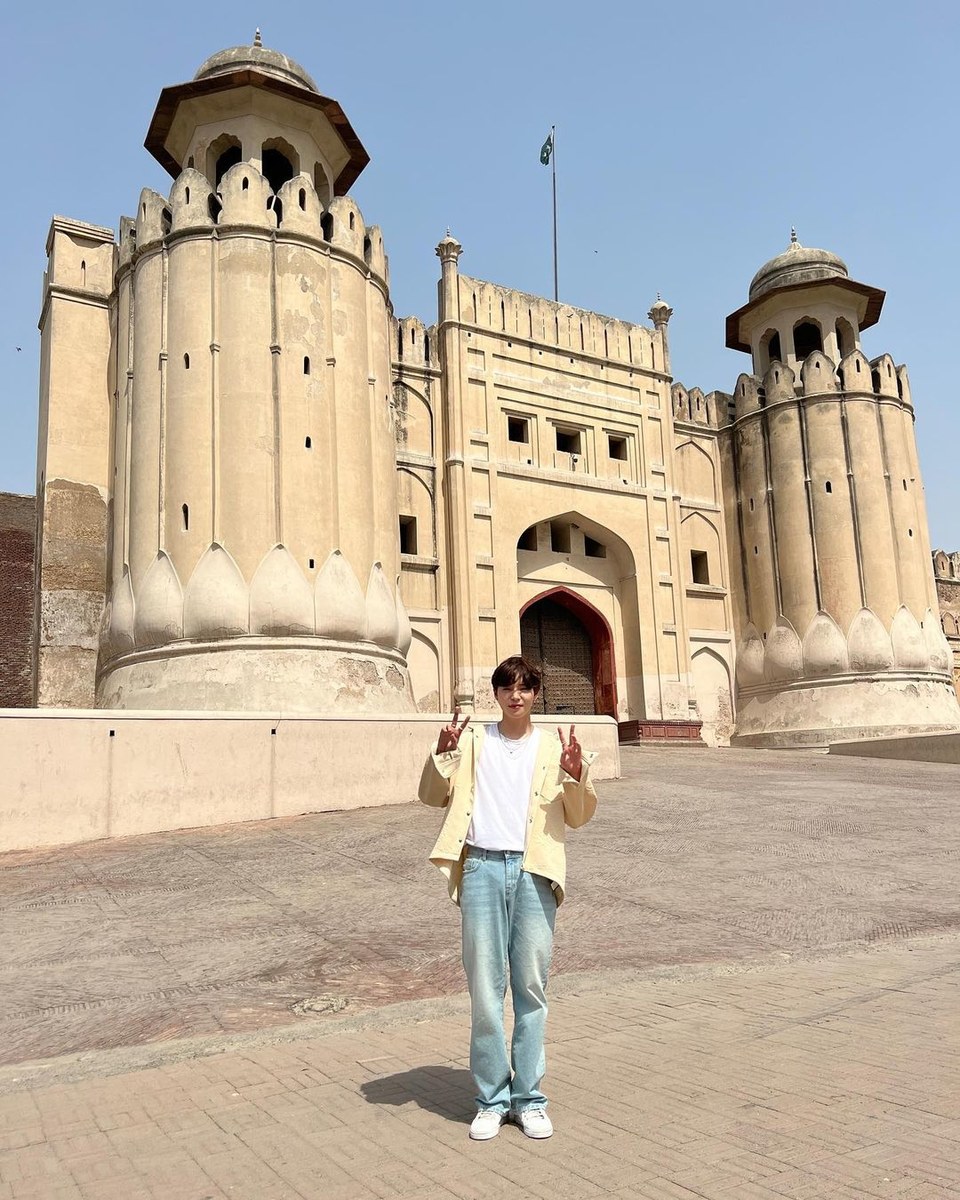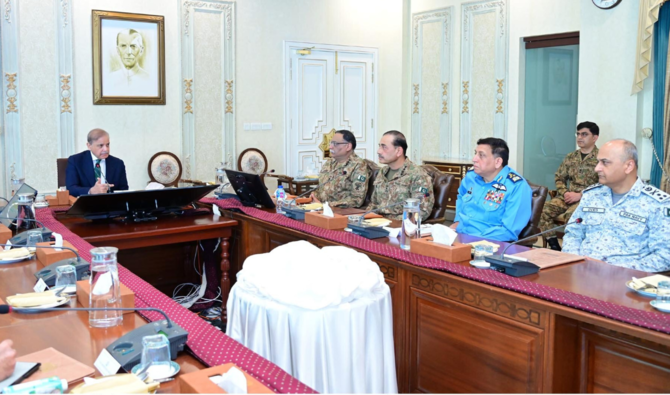KARACHI: A new video by Korean pop band Blitzers, shot partly in Lahore’s ancient Walled City and featuring its iconic Badshahi Mosque and Food Street, as well as truck art, has shone the spotlight on the potential of Pakistani culture to go global, artists and cultural commentators have said.
Lorries in Pakistan are renowned for truck art — candy-colored murals depicting animals, celebrities, religious icons and sayings indigenous to the South Asian country. The popular form of art has inspired gallery exhibitions abroad and prompted stores in Western cities to sell miniatures, becoming one of Pakistan’s best-known cultural exports.
In recent years, UNESCO has used truck art, blended with indigenous themes, to promote girls’ education in Pakistan’s northwestern Khyber Pakhtunkhwa province. A popular campaign, the Truck Art Child Finder, uses the popular art medium to spread awareness on how to report and find missing children.
Pakistan’s best known truck artist, Haider Ali, has gone viral for using truck art to paint a mural of the slain African American, George Floyd, on a wall of his home, and for transposing the technique on sneakers.
Commenting on the K-pop video ‘Hit the Bass,’ which has garnered over 5 million views in less than a week and which features landmark Pakistani buildings and truck art, Ali told Arab News the country’s cultural exports had been making their way around the globe “for a long time.”
“It is great to see truck art becoming a part of other cultures and people in various parts of the world accepting it wholeheartedly,” he said. “People are spreading peace through different means.”

Band members of a Korean pop band, Blitzers, can be seen during the shoot of 'Hit The Bass' in Lahore, Pakistan. (Screengrab from the music video of 'Hit the Bass')
“Fan groups of Korean bands and performers are actually really active across the country,” culture writer and content creator Ahmer Naqvi said.
Indeed, the K-pop trend has caught on in Pakistan in recent years, with young Pakistanis organizing K-pop themed hangouts and parties and feverishly posting on social media accounts dedicated to the Korean boy bands.
“This video becomes very interesting because it’s the first moment that I know of where Korean creators are sort of interacting and engaging with Pakistani culture,” Naqvi said.

Band member of a Korean pop band, Blitzers, can be seen during the shoot of 'Hit The Bass' at Lahore Fort in Lahore, Pakistan. (Screengrab from the music video of 'Hit the Bass')
“And truck art has long been Pakistan’s most successful and digestible pop culture export ... We have seen it come to symbolize Pakistani culture in lots of places. It’s been used in all sorts of popular culture, particularly those that engage with a global audience … For truck art to enter that conversation is a significant thing.”
Journalist and social activist Afia Salam said people around the world were interested in truck art as it was “something exclusive to us.”
“Culturally, it sort of places Pakistan in a unique position,” he told Arab News. “This is something visual and has been creatively adapted to other merchandise such as khussas, coasters, travel bags, accessories, etc. I really don’t know of any other country that uses the kind of truck art we have. So, anything that brings something positive for Pakistan, I am all for it.”

Jinhwa, one of the band members of a Korean pop band Blitzers, poses for a picture in Lahore, Pakistan, on June 15, 2022. (official_blitzers/instagram)
Blitzers arrived in Pakistan with the help of agriculturalist Muhammad Qamar Hayat Tiwana and his wife Anna Tim, a Korean-Pakistani who regularly represents Pakistan on South Korean TV.
Tim, her husband said, was the one to convince the band to shoot in Pakistan instead of neighboring India, where they were originally scheduled to go.
“On their way back, I presented them small gifts,” Tiwana said, “including our national dress, the shalwar kameez.”





















